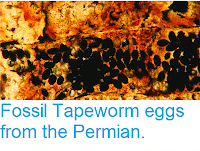The Rhabdocoela is an order of Platyhelminth Flatworms with about 1700 species known across the globe. The majority of these are freeliving, often being predators specialising in the hunting of Cladocerans (Water Fleas), while others feed on Algae and sometimes incorporate them into their tissues to form symbiotic relationships. One group of Rhabdocoels, the Temnocephalidae, are not freeliving, but rather ectosymbionts (organisms that live on the surface or within the body cavities of other organisms but do not obtain food from them) or parasites of other animals. The genus Temnocephala includes 37 species of symbiotic freshwater Rhabdocoels from the Neotropics, which are associated with a large variety of hosts including Chelonians (3), Mollusks (6), Insects (7) and Crustaceans (21). At present, only two species have been described from Colombia, Temnocephala colombiensis, an ectosymbiont of the Gastropod Pomacea sp., and Temnocephala icononcensis, hosted by the Pseudothelphusid Crabs Hypolobocera bouvieri, Phallangothelphusa dispar, and Strengeriana cajaensis.
In a paper published in the journal ZooKeys on 12 March 2020, Carolina Lenis, Freddy Ruiz, and Carlos Muskus of the Programa de Estudio y Control de Enfermedades Tropicales at the Universidad de Antioquia, and Antonio Marcilla and Imelda Vélez of the Departamento de Farmacia y Tecnología Farmacéutica y Parasitología, at the Universitat de València, describe a new species of Rhabdocoels from the branchial chambers of the Freshwater Crab Valdivia serrata in Amazonas Department, Colombia.
Eleven specimens of Valdivia serrata were manually collected from the Reserva Natural Tanimboca. The specimens were transported alive to the Programa de Estudio y Control de Enfermedades Tropicales laboratory and identified using a Decapod key. Specimens of Temnocephala were removed
from the branchial chambers of host crabs under a stereomicroscope, rinsed in saline solution, and preserved in cold alcohol-formalin-acetic acid and 70% ethanol for morphological identification by light microscopy; or fixed in 2.5% glutaraldehyde for observation by Scanning Electron Microscopy. The Temnocephalans were identified by focusing on the morphology of the reproductive complex, the shape of the epidermal excretory syncytial plates and the deposit areas of the eggs in the host.
from the branchial chambers of host crabs under a stereomicroscope, rinsed in saline solution, and preserved in cold alcohol-formalin-acetic acid and 70% ethanol for morphological identification by light microscopy; or fixed in 2.5% glutaraldehyde for observation by Scanning Electron Microscopy. The Temnocephalans were identified by focusing on the morphology of the reproductive complex, the shape of the epidermal excretory syncytial plates and the deposit areas of the eggs in the host.
The new species is named Temnocephala ivandarioi, in honour of Iván Darío Vélez Bernal for his outstanding contributions to the study of helminthology and the understanding of tropical diseases in Colombia. The species has a body 1.36–2.26 mm in length (excluding the tentacles), and 1.18–1.56 mm wide, with an adhesive disk on the ventral surface and eyespots with red pigmentation.
Temnocephala ivandarioi and Valdivia serrata (A) specimen of Temnocephala ivandarioi showing an egg, ventral view, (B) adult specimen stained in Meyer´s paracarmine, (C) specimen stained
in Borax carmine (D) male specimen of Valdivia serrata, (E) abdomen, (F) gonopods, lateral view. Scale bars are 200 μm in (A)–(C), 10 mm in (D)–(F). Lenis et al. (2020).
in Borax carmine (D) male specimen of Valdivia serrata, (E) abdomen, (F) gonopods, lateral view. Scale bars are 200 μm in (A)–(C), 10 mm in (D)–(F). Lenis et al. (2020).
In Colombia more than 132 species of Decapod Crustaceans have been recorded, while only two associated species of Temnocephalans have been reported to date: Temnocephala icononcensis and Temnocephala ivandarioi. The great diversity of these potential hosts suggests that most temnocephalans remain undescribed.
Temnocephala ivandarioi details of epidermal excretory syncytial plates and eggs. (A) antero-lateral area observed with Scanning Electron Microscope showing leftmost tentacle and left epidermal excretory syncytial plate, arrow showing contour and position of excretory pores (n). (B) Line drawing of entire specimen showing the epidermal excretory syncytial plates. (C) egg observed with Scanning Electron Microscope showing the filament (fi), peduncle (pe), and plane of fracture of the operculum (pf ). (D) Line drawing of a whole egg showing the oblique fracture plane to the longitudinal axis of the egg. (E) Live adult specimen showing red eyespot pigment. (F) Unhatched egg showing the filament (fi). (G), (H) Live eggs deposited on branchial chambers of Valdivia serrata. Scale bars are 100 μm in (A)–(F), and 1mm in (G) and (H). Lenis et al. (2020).
See also...
Follow Sciency Thoughts on Facebook.








